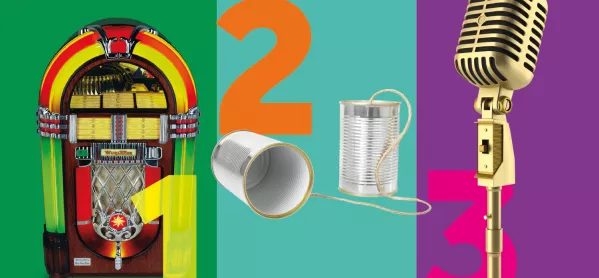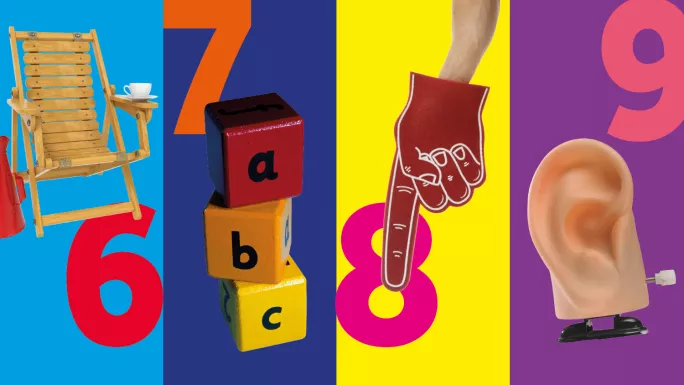- Home
- #ToYouFromTes: Nine essentials for a successful assembly
#ToYouFromTes: Nine essentials for a successful assembly

I always know when I’m telling a good story in assembly, because there is a real stillness as they anticipate what is about to happen next,” says Jamie Sullivan, assistant headteacher at Stoke Hill Junior School in Exeter. “Then, when the punchline arrives, you [actually] see them process the message.”
It’s a moment most teachers would have experienced at some point in their career, but how often are teachers now in a situation to engineer such dramatic revelations? In the hectic day-to-day life of a busy school with both teacher and pupil time stretched in all directions, there is anecdotal evidence the humble assembly is being sidelined.
Some schools do them less frequently, some treat them simply as an announcement reading exercise, and some question the need, or indeed desire, to have a whole-school get together at all.
That’s misguided, says Sullivan. He regularly hosts assemblies for 350 children and says it’s important teachers recognise the power in getting children together.
“Coming together each day as a whole school, year groups or classes allows us to revisit the school’s visions and value on a regular basis,” he says. “[Also] there are so many things good and bad happening in the world and assembly is an excellent opportunity to help children understand them and how they are affected.”
Sarah Ledger, director of learning at secondary academy William Howard School in Brampton, is of a similar view. “Assemblies are a great way of reminding everyone why we’re here, what we’re all supposed to be doing and why we’re supposed to be doing it,” she says. “There’s nothing like a good assembly for whipping up esprit de corps.”
Perhaps the source of much of the negativity about assemblies is that there are too many ineffectual ones doing the rounds. With little free time, it is tempting to just trot out a few inspiring quotes or just use the same old assembly you always do.
That can lead to assemblies being unfairly judged by case studies that do not represent the full potential of the medium.
So what should the essential ingredients of a good assembly be?
1. Change the record
You have to be innovative when planning assemblies, says Jade Fahie, a Year 4 teacher at School 21 in East London.
“Experiment,” she says. “You would in your classroom, so why wouldn’t you for the school assembly?”
This could be done through something as simple as using visual stimuli such as photos, videos and statements, to using feng shui to change the way the assembly is set out.
“You don’t have to be in lines,” she adds, stating it is a simple but easy way to shake things up and keep it interesting.
2. Make it a two-way process
For Fahie, the main emphasis she places on assemblies is making it a chance for discussion, rather than just “the teacher talks and pupils listen”.
“Great assemblies I have been a part of or led have been when the children are the ones leading and the adults are merely facilitators organising the talk taking place and pushing on discussion through questioning,” she says. “Students are expected to take part in discussions and are also given roles to facilitate this (often a surprise summariser is used so any child can be expected to feedback).
“We also use topics that are relevant to the children. Controversial statements are used to rile discussion and different talk protocols are used throughout to ensure they are not sat fiddling with their shoes and ultimately switching off.”
3. Embrace singing
Getting pupils to engage like this may not be the way every school operates, but assemblies have always had pupil engagement at their core - often through the medium of music.
And for many teachers, this remains a core element: “Really good assemblies always have a song,” says Sullivan.
Chris Dyson, headteacher at Parkland Primary School in Leeds, is another who is firmly behind the idea that music is key to a successful assembly, with songs from artists as diverse as ELO, Neil Diamond and even 1990s boyband Five sung with gusto.
Not only is this fun for the children but it has also helped focus energy into more useful avenues, he argues.
“Behavioural issues were a big thing when I started and assemblies could be rowdy, but I found if I put music on and lyrics for the children to sing along with it gave them something to focus on,” he says.

4. Embrace fun
This is not the only thing Dyson discovered helped turn assemblies into the highlight of the school week.
“We have a times-tables competitions and the star performers of the week get to sit in the ‘best seat in the house’ sofa at the front of the assembly,” he explains. “We even have a ‘Writers of the Week’ competition, introduced in the style of Harry Hill’s ‘TV Highlight of the Week’, which everyone loves. It’s all about making the assembly a fun, positive event that the children just love and look forward to.”
Dyson says it’s not only the pupils who enjoy assemblies, but also the rest of the teaching staff and parents, many of whom attend end-of-term assemblies and join in the activities and get a chance to see the upbeat, celebratory atmosphere the assemblies have brought to the school.
5. Make them relevant
That’s not to say every assembly has to be an all-singing, all-dancing affair to have an impact. Finding newsworthy events or anniversaries for theme assemblies can be a great way to mix things up and make an assembly more memorable.
Benjamin Culverhouse, a teacher at High Down Junior School, Portishead, explains how he used Parliament Week as a chance to recreate Parliament within the assembly, making for a memorable experience.
“I arranged upper key stage 2 into rows representing the House of Commons, facing each other, with a speaker (me) and a public gallery (other staff). It was very much a last-minute idea - originally, I was just going to give a talk or explanation - but they loved it, as did the ‘public gallery’.”

6. Invite guest speakers
Another favourite tactic for producing interesting, relevant and memorable assemblies is to bring in outside speakers. Culverhouse says that he has used this to his advantage on several occasions, ranging from authors to politicians and everything in-between.
“Beetle Boy author MG Leonard gave a fascinating talk about beetles,” he says. “Uber-marathon-man Ben Smith was great for the challenge and perseverance message. We had a Skype session with (speaker of the House of Commons) John Bercow during Parliament Week - he’s quite a character. Our local MP Liam Fox also came in. I’ve never seen so many hands up wanting to ask a question. We’ve had some excellent scientists as well - there’s nothing like controlled explosions to get the kids hooked.”
He adds that the majority of these speakers gave their time for free and he urges other teachers to be confident enough to contact potential speakers to help out: “If you don’t ask, you don’t get.”
However, booking an outside speaker does not mean that the assembly is taken care of and you can just put your feet up. Ledger cautions that it is important that anyone offered a free platform during an assembly is properly vetted for their content to ensure it’s worthwhile.
“If you have a visitor speaking, ask them to send you their stuff and check exactly what they are going to say,” she says.
7. Remember the basics
Before you get too carried away dreaming up all kinds of weird and wonderful scenarios or brilliant guest speakers you could invite, it’s worth remembering the basics of what you are trying to achieve with an assembly.
“There needs to be a clear focus - one main speaker and one key message,” says Ledger. “The worst assemblies are when there are too many bits and pieces, no clear order and where it runs over.”
This is advice that all who Tes spoke to passed on, underlining the need for planning, the same as any lesson. But one teacher, speaking anonymously, said many fall foul of this trap.
“I’m sorry to say that some senior leaders - who should know better - do not plan them as carefully as they ought to. And some do not plan them at all,” said the teacher, from a school in the south of the UK.
8. Keep specific behaviour messages out of it
Many caution on the importance of not seeing assemblies as a chance to “discipline” pupils, as this will invariably alienate the majority who have nothing to do with the issue you are addressing.
“Even if you have a hideous outbreak of bottle flipping, you’re still only talking to about 10 per cent of the audience,” says Ledger.
“You know staff briefings where everyone gets told off about submitting data late and you got yours in two days before the deadline? That’s how most kids feel when the whole year group gets ranted at for doing something most of them don’t.”
9. Be open to feedback
Even if you feel you’ve got all this down pat and think you’re pushing the boundaries of what an assembly can be, it never hurts to ask for advice and feedback: “Teachers talk a lot about the assemblies they see and will usually have an opinion on them,” says Culverhouse.
Dan Watson is a freelance journalist
Keep reading for just £1 per month
You've reached your limit of free articles this month. Subscribe for £1 per month for three months and get:
- Unlimited access to all Tes magazine content
- Exclusive subscriber-only stories
- Award-winning email newsletters



